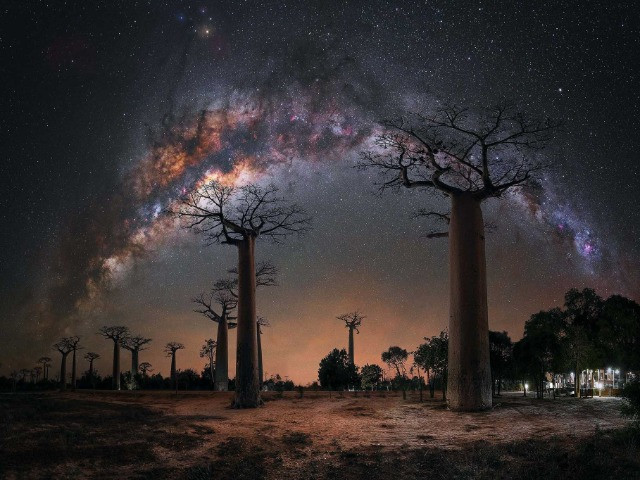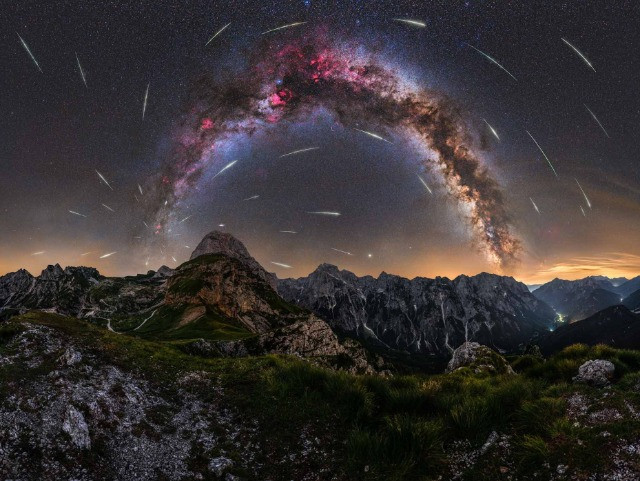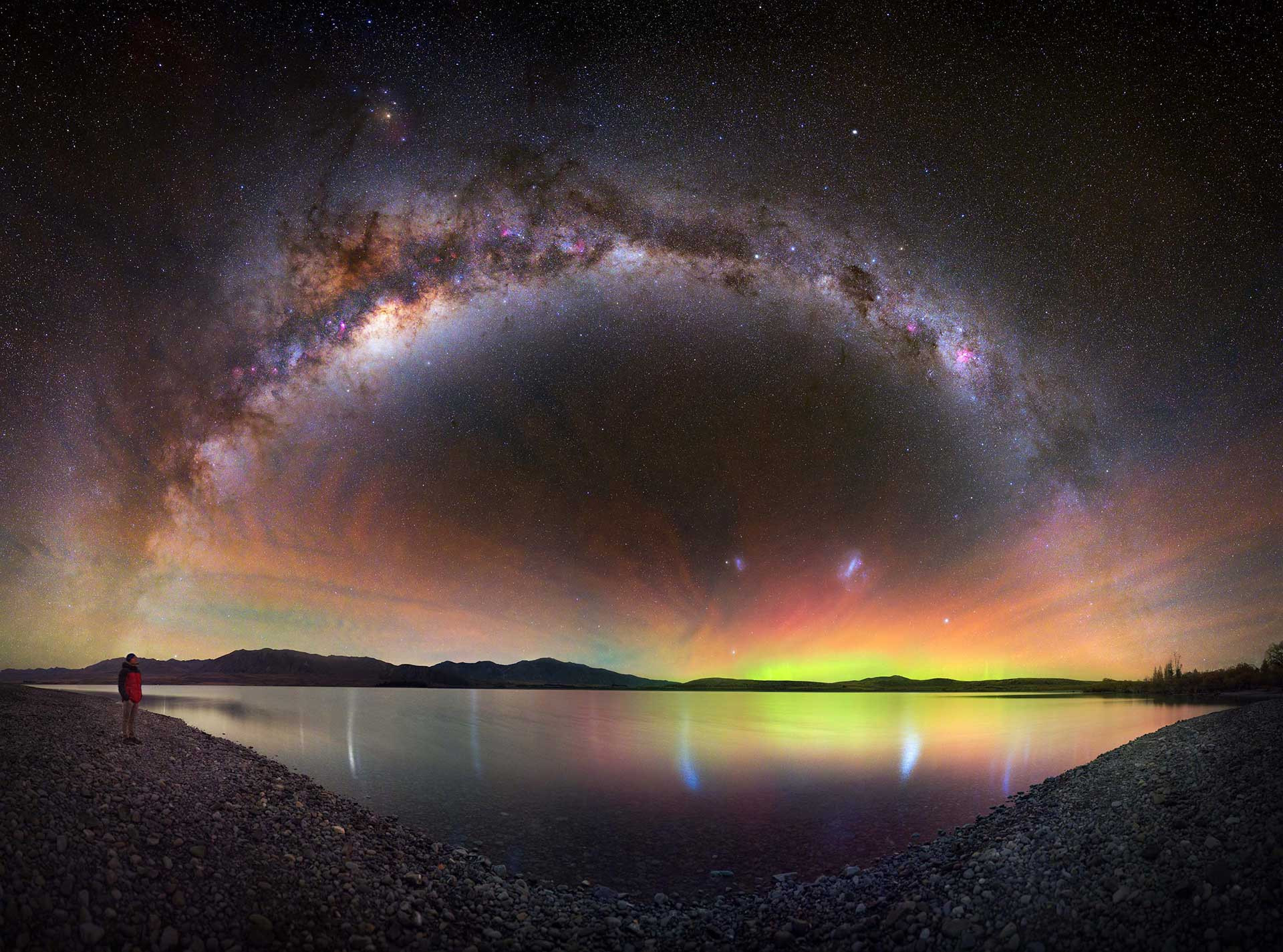Travel photography blog Capture the Atlas has published the latest edition of their annual Milky Way Photographer of the Year, a collection featuring the 25 best Milky Way galaxy pictures of the year.
This year’s list includes images from around the world, taken in 16 countries like the United States, Australia, New Zealand, Madagascar, Chile, Argentina, Namibia, Switzerland, Bulgaria, Spain, Slovenia, Japan, Iran, Peru, Yemen, and Indonesia by 25 photographers of 16 nationalities.
Dan Zafra, the editor of Capture the Atlas, curates these photos throughout the year. The compilation is published in late May every year, during the peak of the Milky Way season, aimed at inspiring and sharing the beauty of our galaxy.
Scroll down to see a curated selection from the 2023 Milky Way Photographer of the Year compilation.
The Cathedral Light Show—Roksolyana Hilevych
Tenerife, Spain
Sometimes it takes a bit of luck. This was definitely the best moment I’ve ever had during a nighttime session; this only happens once in a lifetime. However, I really hope to be able to see the fireball again someday! It was the first and only time I saw such a bright meteor. It lit up everything around it, making it seem like daytime for a few seconds. Luckily, at the moment it appeared, I was photographing the core of the Milky Way. Right after I finished capturing the Milky Way with a star tracker, I took a close-up shot of the Tajinastes in full bloom. The photo also includes this particular mountain in the background which resembles a cathedral.
Cafayate Star Factory—Gonzalo Santile
Cafayate Salta, Argentina
To capture this shot, I arrived before the blue hour and as soon as the first stars appeared, with some light still shining on the landscape, I took the images for the foreground. After that, when it was completely dark, I shot vertical photos of the sky. As the Milky Way was already very low at that time of the year I had to hurry as I only had one chance to get the images of the sky once it got dark. I aligned my tracker and the action began. In the image, you can see the rock formations and “windows” of this area of Cafayate Desert known as Las Ventanas (“The Windows”) and the small cacti that are the only vegetation here. I was able to capture the reddish colours of the nebulae and more details in the night sky thanks to the combination of a star tracker and an astro-modified camera.
The Bottle Tree Portal—Benjamin Barakat
Socotra, Yemen
I captured this image during my yearly photography expedition to Socotra. Nights on the mystical island of Socotra are unforgettable, especially under the embrace of the most alien-looking and beautiful trees I have ever seen. Their gnarled and twisted trunks seemed to tell stories of ancient times while the blooming pink flowers added a touch of ethereal beauty. However, what truly took my breath away was the darkness. It was as if someone had flipped a switch and turned off all the lights in the world. The stars shone so brightly that it felt like I could touch them. The horizon was so dark that it looked like the zenith. In that moment, I felt small and insignificant, but incredibly alive, connected to the primal forces of nature that shaped this magical place over millions of years.
Winter’s Airglow— Larryn Rae
Southern Alps, New Zealand
This was some of the craziest airglow I have ever seen! Airglow is when atoms get charged and excited in the upper atmosphere by the sun and emit this wonderful colour and cloud-like pattern. This image happened by pure accident while I was waiting for a friend to arrive at another location. I thought while waiting that I would take some shots at this lake on the way, and as soon as I had the first image on the screen, I knew I was about to capture something pretty amazing! An hour later, after scouting a good composition, I had my panorama in the bag. This is a testament to expecting the unexpected and always taking a shot, even when it’s not your planned destination!
The Cactus Valley—Pablo Ruiz García
Atacama, Chile
It was my first trip photographing the Milky Way in the Southern Hemisphere. I chose the Atacama Desert, one of the coolest and most mind-blowing places on the planet to experience the night sky. Some of the spots I was really excited about capturing in my photos were the Gum Nebula and the Magellanic Clouds. It was the first time I could photograph them because we can’t see them up north. The photo I’m sharing with you was taken in the Cactus Valley, a stunning area of the Atacama Desert where it’s easy to compose photos with the night sky. I managed to include both nebulae, along with the iconic cacti of the valley.
You may also like to read
Celestial Radiance—Tom Rae
Lake Tekapo, New Zealand
Photographing the night sky has been both awe-inspiring and frustrating. Under the night sky, a profound connection with nature and the universe develops, offering a new perspective on life and appreciation for the world. As night fell, the autumn sky revealed itself, and I began shooting. Midway through my Milky Way panorama, a faint glow appeared on the horizon—my first aurora! What followed was a spectacular light show of flowing beams and vibrant colours. The image also showcases airglow, a wave-like pattern of red and green caused by ionised molecules in our atmosphere. But the true focus remains the Milky Way galaxy gracefully spanning the sky, accompanied by the Magellanic Clouds, its smaller satellite galaxies, hovering above the aurora.
Alien Forest—Marcin Zając
Mono Lake, California
These strange, cream-coloured rock towers located near Mono Lake are called tufas. They formed when underwater springs that are rich in calcium mixed with the waters of the lake, which are rich in carbonates. The resulting reaction formed limestone. Over time, the buildup of limestone formed towers, and when the lake’s water level dropped, the towers became exposed.
The Night of Huayhuash—Jose D. Riquelme
Huayhuash, Peru
The Huayhuash mountain range, located in the Andean region of Peru, is home to stunning landscapes with mountains and lakes, offering unique opportunities to capture the Milky Way in all its splendour. Night photography in this location is an unforgettable experience, as the altitude and clean air allow the stars to shine brightly. In this image, the mountain and the lake below serve as the perfect frame to highlight the Milky Way, which crosses the night sky. The reflection of the starry sky in the lake creates a captivating symmetry, while the silhouette of the mountain adds depth and contrast.
Quiver Dreams—Peter Hoszang
Keetmanshoop, Namibia
This is an image I’ve been looking forward to capturing for so long. I’m happy to finally be able to share a photo displaying the magical Quiver Trees along with the pristine Namibian night sky. The Quiver Tree, or Kokerboom, is a tall, branching species of succulent plant indigenous to Southern Africa, specifically the Northern Cape province of South Africa and parts of Southern Namibia. One of the few forests of Kokerboom is the Quiver Tree Forest, close to Keetmanshoop in Namibia. In the sky, on the left side, you can see part of the Milky Way galaxy and the Large Magellanic Cloud, a relatively small, irregular galaxy in the neighbourhood of the Milky Way (on the right).
Interstellar—Jose Luis Cantabrana Garcia
Pinnacles Desert, WA, Australia
‘Interstellar’ captures not only the epic beauty of this desert location and the night sky but also the personal sense of wonder and accomplishment that comes from checking off a long-awaited destination from my list. This area is sacred to the Noongar people, the traditional owners of this land, and in the past, it was only accessible to women. The story goes that these limestone rocks are nothing but petrified ghosts of the men who dared to enter and were then eternally punished by the gods. These timeless guardians stand tall and proud, reaching toward the starry sky above. As the summer Milky Way stretches across the night sky, these ancient ghosts seem to bridge the earthly world with the interstellar realm beyond.













